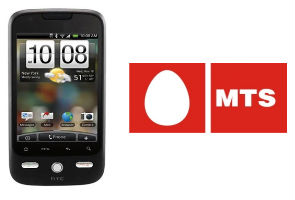
Now, Indians could get a smartphone free with a service provider contract. This is a common practice the world over and mobile phones are given free to consumers who sign a contract to be with a service provider in exchange of a monthly rent commitment for one or two years. In India, service provider MTS is leading the charge with the launch of the MTS Pulse from HTC. MTS is available in 19 telecom circles across India including, Andhra Pradesh, Bihar & Jharkhand, Delhi, Gujarat, Haryana, Karnataka, Kerala, Kolkata, Madhya Pradesh, Maharashtra & Goa, Mumbai, Rajasthan, Tamil Nadu, Chennai, Uttar Pradesh, Orissa, West Bengal, Punjab and Assam.
Customers can get the Pulse for free by signing on for a one year contract from MTS at a monthly rent commitment of Rs. 1500, for a year. For this price, the users will get 1500 minutes of local and STD calling, 1500 SMS and 1500 MB of data usage every month.
The HTC Pulse is an entry level Android smartphone that features a 528 Mhz Qualcomm processor, 3.2-inch capacitive touch screen with a HVGA resolution of 320 x 480 pixels, 5 megapixel camera, Google Android 2.1 OS and 8GB memory card in the box.
The phone is EVDO enabled and can get download at speeds of up to 3.1 Mbps. The phone also offers mobile TV.
To sign on for this, users will need to furnish some extra set of documents over and above the usual photograph, PAN card and address proofs. The extra documents include six post-dated cheques and two recent salary slips. The self-employed will need to show IT returns for two years.
This mighty sound like too much documentation for a mobile phone but we are not complaining. It's a good start and could push operators to start subsidizing more devices with contracts especially since the mobile handset penetration in India is very high because of the availability of cheap handsets.
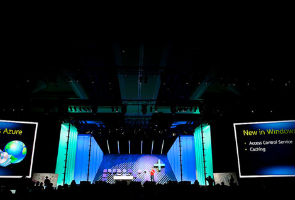
Microsoft unveiled plans for the next version of its Windows Phone platform on Wednesday at MIX, the company's annual developer conference in Las Vegas.
At the conference and in a press release, Microsoft said it would add multitasking to the next generation of its mobile operating system. This will allow users to listen to audio while using other applications, or quickly switch between programs on the phone.
Although Windows Phone 7 hit the market to generally positive reviews last year, critics cited the phone's inability to multitask as a major flaw.
The company will also give developers who build apps for the Windows Phone platform broader access to a phone's hardware, including the built-in camera and motion sensor. This will let programmers build a new range of apps, including augmented reality experiences, which mix live video with overlaid data, Microsoft said.
Developers will receive access to the new phone updates in May.
Although some of these updates might seem trivial when compared to the capabilities of other mobile platforms, including Apple's iOS and Google's Android, the speed with which Microsoft is improving Windows Phone indicates its dedication to the software.
In the press release, Microsoft said there are now 38,000 registered Windows Phone developers who have built more than 13,000 apps.
Microsoft also said it would give game developers broader access to the Microsoft Xbox 360 Kinect game controller. For example, developers will be given access to the Kinect camera.
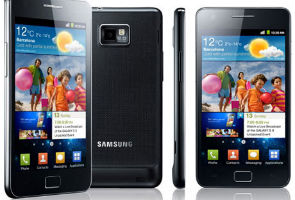 Samsung announced a whole plethora of gadgets at the Samsung South West Asia Forum in New Delhi today. Amongst many other devices, the much awaited Samsung Galaxy S II will be launched in India in May and will be priced at Rs 30-35,000.
Samsung announced a whole plethora of gadgets at the Samsung South West Asia Forum in New Delhi today. Amongst many other devices, the much awaited Samsung Galaxy S II will be launched in India in May and will be priced at Rs 30-35,000.
The Samsung Galaxy S II was first unveiled at the Mobile World Congress Barcelona in February. Let's take a look at how it stands against the soon to release LG Optimus 2X.
Both the devices boast of similar specifications that includes a 1 GHz dual core NVIDIA tegra 2 processor, 8 MP camera, 1080p video camcorder, Bluetooth 3.0, Wi-Fi 802.11 n, DLNA, HDMI out and support HSPA+ network. However, there are some differences that distinguish the two devices. The Galaxy S II has a 4.3-inch WVGA (480 x 800) Super AMOLED plus touch screen display whereas the LG Optimus 2X has a 4-inch WVGA (480x800) TFT LCD touchscreen display. The Galaxy S II has a whopping 16GB of internal storage as compared to the Optimus 2X that has an internal storage of 8GB. Samsung has added Cisco based enterprise solutions to attract the enterprise users while the Optimus 2X shows off dual display support (HDMI mirroring) and may be upgradable to Android 2.4 when it is ready.
Samsung has finally announced the Galaxy S2 at MWC 2011, a successor to the 2010 chart-topper, the Samsung Galaxy S. Beauty on the outside, a beast on the inside, the Galaxy S2 looks sleeker, lighter and is a whole lot faster than its predecessor. The best feature of the device is that it has a dual core 1GHz processor and runs Android 2.3 (Gingerbread).
The display is a gorgeous 4.3-inch WVGA SUPER AMOLED screen with a resolution of 480 x 800 pixels. The device is really thin at 8.5mm. That's even thinner than the iPhone 4! Catch the video after the specifications below.
Processor: Dual-core 1GHz ARM Cortex-A9 proccessor, Orion chipset
OS: Android 2.3 OS Gingerbread
Network: HSPA+ 21Mbps/ HSUPA 5.76Mbps, EDGE/ GPRS Class 12, Quad band GSM 850/900/1800/1900, Quad band UMTS 850/900/1900/2100
Dimensions: 125.3 x 66.1 x 8.5 mm
Display: 4.3-inch WVGA SUPER AMOLED Plus with a resolution of 480 x 800 pixels, Gorilla Glass display, TouchWiz UI v4.0, Multi-touch input method, Accelerometer sensor for UI auto-rotate, Touch-sensitive controls, Proximity sensor for auto turn-off, Gyroscope sensor, Swype text input
Memory: 1GB RAM, 16GB/32GB, MicroSD (up to 32GB)
Camera: 8MP AF with LED Flash + 2MP Front
Video: MPEG4, H.264, H.263, WMV, DivX, Xvid, VC-1, Recording & Playback 1080@30fps
Image: JPEG, PNG, GIF, WBMP, BMP, AGIF, GPS: A-GPS
Audio: MP3, OGG, AAC, AAC+, eAAC+, AMR-NB, AMR-WB, WMA, WAV, MID, AC3,, IMY, FLAC, XMF
Connectivity: Wi-Fi a/b/g/n, BT v3.0+HS, USB 2.0 OTG
Connectors: MicroUSB, 3.5mm Ear Jack
Battery: 1650mAh
Message: SMS/MMS (OMA v1.2), Email (POP3/IMAP/SMTP, SSL/TLS), Exchange ActiveSync Email
Convergence: Easy Set-up (WPS PIN/PBC, Wi-Fi Direct), AllShare (DLNA1.5), Samsung Kies 2.0, Samsung Kies air
4 Hubs: Social Hub / Readers Hub / Music Hub / Game Hub
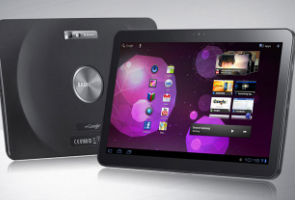 Step aside Apple; we have a new tablet that's caught our attention! Samsung has unveiled the Galaxy Tab 8.9 and 10.1. The company hasn't announced a release date for the 8.9 version of the tablet but you can see the 10.1-inch Wi-Fi only on store shelves on June 8, 2011 in the US. Samsung also plans to launch the device in India very soon after its global launch. It could launch in India as soon as 30 days after its global launch.
Step aside Apple; we have a new tablet that's caught our attention! Samsung has unveiled the Galaxy Tab 8.9 and 10.1. The company hasn't announced a release date for the 8.9 version of the tablet but you can see the 10.1-inch Wi-Fi only on store shelves on June 8, 2011 in the US. Samsung also plans to launch the device in India very soon after its global launch. It could launch in India as soon as 30 days after its global launch.
The 16GB version of the 10.1-inch device is priced at $499 (Rs. 22,379) and the 32GB at $599 (Rs. 26,864). The 8.9-inch due out in later this year will cost you $469 (Rs. 21,064) for the 16GB version and $569 (Rs. 25,519) for the 32GB one. The prices for the 3G versions of both the devices are still to be revealed. The prices are an approximate conversion of US prices and not the final prices at which the tablets will be launches in India.
In terms of specifications however, the Galaxy Tab 8.9 seems to be a threat for the iPad 2. The device has an 8.9-inch WXGA TFT LCD display with a resolution of 1200 x 800. The device is just 8.6mm thin. That's 0.036mm thinner than the iPad 2, which to the naked eye really makes no difference. None-the-less it crowns the Samsung Galaxy Tab 8.9 as the thinnest tablet in the market. TheGalaxy Tab 8.9 is also lighter than the iPad 2 by 131gms. (This is beginning to sound like a models anorexia war than tech but any way...). The 8.9-inch beauty boasts of a 1GHz dual core processor running Android 3.0 Honeycomb, has Samsung's TouchWiz 4.0 layer and Flash 10.2 support.
The device will come with 16GB and 32GB storage variants at launch but you can expect a 64GB variant in the future. The device also comes with stereo speakers, full HD video playback, a 2MP Front facing camera; 3MP rear camera with flash and can record video at 720p HD. The device also claims to have a battery life of 10 hours from its 6800-mAh battery.
The 10.1-inch big brother possesses the same specification and is a bit heavier at 595gms. The screen resolution too remains the same at 1200 x 800.
We were there at the Samsung event at the Taj Palace, New Delhi. Stay tuned for the first pictures from there soon.
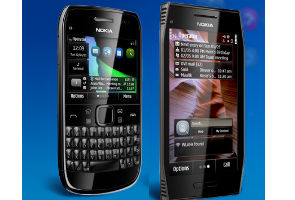 Nokia has announced two new handsets, the X7 and the E6, which will sport an updated Symbian user interface dubbed "Anna". The new Symbian upgrade will be available for the Nokia N8, E7, C7, and C6-01 later this year
Nokia has announced two new handsets, the X7 and the E6, which will sport an updated Symbian user interface dubbed "Anna". The new Symbian upgrade will be available for the Nokia N8, E7, C7, and C6-01 later this year
The X7 features an OLED 4-inch ClearBlack display, an EDOF 8-megapixel camera and HD video recording.
The E6 is a full QWERTY phone similar to the Nokia E72. It features a high-resolution 325 PPI (Pixels Per Inch) screen that matches the iPhone 4 display in quality. It also features a full focus 8-megapixel camera that can record HD video.
The new Symbian interface contains more than 50 enhancements, which include a full QWERTY keyboard in portrait mode, new icons, a new split view and a new web browser, which, Nokia claims, is three times faster than the previous Symbian browser.
Ovi Maps has also been upgraded for faster search and new transport routes.
However it remains to be seen how well the new Symbian upgrade performs. Previously, the Nokia X7 was scheduled for a US release with AT&T but the launch was subsequently cancelled.
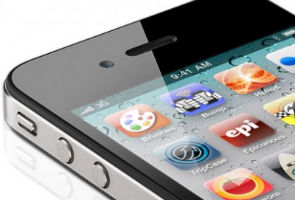 Bharti Airtel and Aircel have issued press statements that the iPhone 4 will hit Indian shores "in the coming months." No specific time or potential price for the device were unveiled.
Bharti Airtel and Aircel have issued press statements that the iPhone 4 will hit Indian shores "in the coming months." No specific time or potential price for the device were unveiled.
Vodafone and Airtel were the two players that brought the previous generation iPhones toIndia. It is a little surprising that Vodafone hasn't made any announcements about the same. Another surprising element is that Aircel will be introducing the iPhone 4 along with Airtel. Both, Aircel and Airtel have rolled out their 3G services in selective parts of the country. We are also hoping to see some special 3G data plans for the iPhone 4.
The big question is, with Verizon already offering a CDMA iPhone 4, will we see a similar offering from Reliance Communication and TATA Indicom in the near future? Stay tuned, as we will update you with all the information soon!
Also, isn't it already too late for the iPhone 4 to be launched in India with talks of iPhone 5 already heating up?
 To many, tablet computers have one major weakness: It is hard to create original content on them. But on Monday, Adobe announced a series of updates to its software that might help address that.
To many, tablet computers have one major weakness: It is hard to create original content on them. But on Monday, Adobe announced a series of updates to its software that might help address that.
The main update integrates Adobe Photoshop, running on a desktop computer, with software running on tablets. Photoshop is an option within the Creative Suite software.
For example, one new feature, Adobe Eazel allows users to draw with their fingers, taking full advantage of the screen's multi-touch interface, and then send the finished image back to a desktop computer. Another app, Adobe Color Lava, lets tablet users mix colours on a touchscreen and create swatches or patterns that can then be shared with a desktop computer.
An update to Adobe InDesign adds new tools that make it simple to create and publish interactive magazine and newspaper content for tablet computers.
Updates to other Adobe software offer new features that will enable users to develop software and content for mobile phones.
Adobe also announced a new software developer kit, Photoshop Touch SDK, which developers can use to build other applications for tablets that can also sync with desktop software.
In addition, Adobe also announced on Monday that it would offer a new subscription model -- month-to-month -- for customers who want to use its flagship software without purchasing it outright. Adobe Photoshop will cost $35 a month; access to Adobe's full software suites will cost $129 a month. Adobe Photoshop CS5 is currently priced between $700 and $1,000 in the United States.
David Wadhwani, senior vice president and general manager at Adobe, said in a phone interview that the company had traditionally updated its software every 18 months, but that new software releases would now happen on a two-year cycle. Updates, like the one announced Monday, will take place more regularly.
The new tablet software is expected to appear in the Apple iTunes Store on May 3, and will cost between $2 and $5. Adobe said that it would eventually be available for tablets running Google Android and on the BlackBerry operating system.

During meetings with executives at the headquarters of Research In Motion in Waterloo, Ontario, last week, everyone was understandably keen to show off the BlackBerry PlayBook, the company's first tablet computer. It will be released next week, and its starting price of $499 matches that of the iPad 2.
The PlayBook's most obvious market is the corporations, institutions and governments that have long embraced BlackBerry phones. But the PlayBook has one significant feature of interest to consumers that the iPad can't touch: its ability to play videos, or anything else, stored in Abode's Flash format.
Steven P. Jobs, Apple's chief executive, famously won't allow Flash on either the iPhone or the iPad. But not only does the PlayBook embrace Flash, Mike Lazaridis, one of R.I.M.'s chief executives, boasts that it contains hardware and software that enables his tablet to outperform much more powerful computers when it comes to playing Flash videos.
The Flash video certainly looked good on the seven-inch screens of several demonstrator PlayBooks. Mr. Lazaridis, however, had a much more theatrical demonstration. Using a standard HDMI cable (the connection most people use to link their televisions and Blu-ray players), Mr. Lazaridis plugged a PlayBook into an 85-inch flat-screen television. He then let me randomly choose a variety of Flash-based videos from YouTube and a variety of other Web sites.
Provided that they were high definition, or 1080p, format, the videos looked more like something that was coming from a DVD or even a Blu-ray disc player than the Web. A lack of time, to say nothing of a second 85-inch television, made direct comparisons with other video sources and formats impossible. But the demonstration seemed to support Mr. Lazaridis's claims.
Oddly, the PlayBook owes more to automobiles than the video world for this party trick.
One of the most important features of the PlayBook is that it uses a new operating system from QNX Software Systems, another Canadian company R.I.M. bought about a year ago.
R.I.M. had been working with Harman, the large audio company based in Stamford, Conn., to make sure that BlackBerrys could integrate with the various entertainment systems it makes for a variety of automobile manufacturers.
Particularly in luxury vehicles, those systems feature complex touch screens and provide much more than music. Not only do they control navigation screens, they increasingly are in charge of a variety of other interior functions such as heating and air-conditioning. To help guide it through those tasks, Harman had earlier acquired QNX.
The more R.I.M. worked with QNX's software, the more it liked what it saw. Mr. Lazaridis said that he was particularly impressed by its skilful use of Adobe's Flash software to create on-screen displays in cars.
"We said: 'Wait a minute, we can build a PC-like experience into our tablets and our superphones going forward because they had already integrated Flash,' " Mr. Lazaridis recalled.
R.I.M. worked directly with Adobe to further improve the PlayBook's ability to use Flash. It will be up to reviewers to confirm Mr. Lazaridis's claim that R.I.M. has found a way to use Flash without straining the PlayBook's battery, one of Mr. Jobs's chief concerns.
QNX wasn't the only outside company R.I.M. turned to when it created the PlayBook. It also purchased a Swedish software interface designer known as TAT (The Astonishing Tribe), and gave it the task of figuring out how users would interact with the new operating system, as well as its look.
The result is an operating system that will look familiar to any iPad user but is nevertheless distinctive. Instead of the familiar button on the iPad and iPhone, for example, users summon the PlayBook's home page by flicking a finger up to the screen from the BlackBerry logo on its bezel.
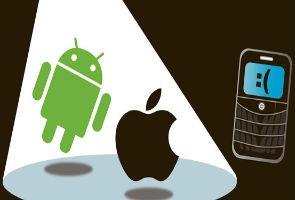
In a rare interview last week, Mike Lazaridis, one of Research In Motion's two chief executives, was the one asking questions:
"Why is it that people don't appreciate our profits? Why is it that people don't appreciate our growth? Why is it that people don't appreciate the fact that we spent the last four years going global? Why is it that people don't appreciate that we have 500 carriers in 170 countries with products in almost 30 languages?"
He wrapped up with "I don't fully understand why there's this negative sentiment, and I just don't have the time to battle it. Because in the end, what I've learned is you've just got to prove it over and over and over."
Mr. Lazaridis can point to numbers that back up his frustrated defense of R.I.M., maker of the BlackBerry, the phone of choice in the White House and a global totem of connectedness. During its last fiscal year, the company, which is based here, shipped a record 52.3 million phones -- a 43 per cent increase over the previous year -- and its fourth-quarter income of $924 million exceeded forecasts.
Nevertheless, as R.I.M. prepares to introduce its first tablet computer on April 19, doubts about its future have arguably never been greater.
Some analysts suggest that R.I.M. has lost its momentum and may now be heading downward, much like Palm, which in better days was expected to rub out the then-fledgling R.I.M. Current BlackBerrys are hobbled with an aging operating system, and the company's market growth last year seems less impressive when contrasted with Apple's 93 per cent rise in iPhone shipments.
In a world where applications have become a major selling point for mobile devices, the number of apps available for BlackBerry phones is in the tens of thousands, compared with the hundreds of thousands for Android and Apple devices. BlackBerrys are still prized for their e-mail capabilities, particularly among government and corporate customers who rely on the devices' tight security. But it is increasingly common to find people who carry a BlackBerry for e-mail and an iPhone for everything else.
That has led several analysts and investors to question R.I.M.'s ability to hold its own in a market dominated by devices running Google's Android software, as well as iPhones and iPads. "They've been caught flat-footed," said Jean-Louis Gass e, a former Apple executive, the former chairman of Palm's software spinoff and a partner at Allegis Capital in Palo Alto, Calif. "They've built a tremendous company; they are people with distinguished backgrounds. They are not idiots, but they've behaved like idiots."
Jim Balsillie, R.I.M.'s other chief executive, vigorously rejected suggestions that R.I.M. was ill-prepared for the changes in its markets. But he acknowledged that if it had moved earlier to introduce its tablet, the BlackBerry PlayBook, it could have improved perceptions of the company. And he agreed with critics on one thing: Many companies will struggle to adapt as the industry makes the huge shift to a world of powerful mobile computers.
"No other technology company other than Apple has successfully transitioned their platform," Mr. Balsillie said in an interview. "It's almost never done, and it's way harder than you realize. This transition is where tech companies go to die."
Mr. Balsillie says the PlayBook will show that R.I.M. has joined Apple in making that move. The tablet is important in part because it will be running R.I.M.'s first all-new operating system since the introduction of the BlackBerry over a decade ago. That software will also be on new phones that the company will release in the coming months.
Richard Tse, an analyst with Cormark Securities in Toronto, said the new operating system might prove to be as pivotal to R.I.M.'s future as Apple's decision to bring back Steven P. Jobs in 1996 and to base its future technology on software he developed at NeXT Computer.
The other historical lesson comes from Palm, the hand-held computing pioneer, which failed to build up enough momentum for its new operating system and had to put itself up for sale. Hewlett-Packard bought it two years ago and is trying to revive the software in its own tablet due later this year, called the TouchPad.
R.I.M.'s equivalent to NeXT is another Canadian company, QNX Software Systems, which it acquired a year ago. It specializes in highly reliable operating systems that are used, among other things, to control systems in automobiles and airplanes as well as nuclear reactors.
The PlayBook has a seven-inch display and weighs less than a pound. Its powerful dual-core processor helps it run several applications at once and, when combined with software developed with Adobe, play Flash-based video at a crisp resolution, even on a large television screen. Apple mobile devices cannot display Flash content, in part because Apple says it strains batteries. Mr. Lazaridis said the QNX system takes a low-power approach; according to R.I.M., the PlayBook has a battery life of 8 to 10 hours, while Apple says the iPad 2 lasts 10 hours.
But what the PlayBook does not have is the many applications to make use of that power. Apps from outside developers are crucial to the success of an operating system, but some developers say they find it difficult and expensive to create apps for R.I.M. products.
When Jason Schwartz was building an app called Matchbook for remembering bars and restaurants, his research found that the most likely users were women who used BlackBerrys. Despite that, the first version of his app works only on iPhones.
"The one you can get to market the quickest and the cheapest is an iPhone," said Mr. Schwartz, who lives in New York. "The experience with Apple is very easy. With R.I.M., I wouldn't even know where to begin."
Tyler Lessard, vice president for developer relations at R.I.M., acknowledged that the company had fallen short in providing tools for small developers, but he said this was rapidly changing. R.I.M. has also slowly started giving developers the tools to make sophisticated apps specifically for the new tablet. Electronic Arts, the big game maker, has already created a PlayBook version of its racing game Need for Speed.
To fill the gap in apps, the PlayBook will have a pair of "apps players" that can run Android and earlier BlackBerry applications, both of which are based on the Java language. Users, however, will be able to download Android applications only if they have been vetted by R.I.M. and added to its online apps store.
Even if R.I.M. does a lot of things right, it could still fail to replicate Apple's success with tablets. Motorola's Android-based Xoom tablet was well received by reviewers, but Deutsche Bank estimates that Motorola has sold only about 100,000 units since February. By comparison, Apple sold about a million iPad 2s during the first weekend it was available.
The Xoom, however, is more expensive than the iPad. By contrast, the PlayBook is the first prominent tablet to match the iPad's price: it will start at $499.
R.I.M. does have something that Android phone makers and Apple lack: access to the corporations and governments that have been buying fleets of BlackBerrys for years.
As on the BlackBerry, R.I.M. will give companies control over the features and data on employees' PlayBooks, and the devices will have access to a company's high-security global data network.
Mr. Balsillie did suggest that R.I.M. might no longer aspire to rule the mobile world -- an unusual admission for someone who has long been an aggressive competitor.
He hinted that having a piece of a fast-growing pie would be enough.
"To be pretty blunt about this: how many people in the world have computing devices in phones, and how many do we have to sell to ensure that we're a rip-roaring success over the next five years?" he asked, without providing an answer. "You'll find that you don't have to be all things to all people."
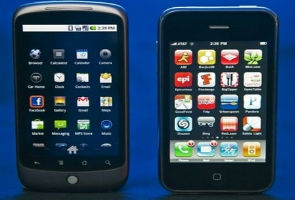 Google has added a Latitude feature that lets people using iPhones or Android-powered smartphones get rewarded for loyalty to shops or restaurants.
Google has added a Latitude feature that lets people using iPhones or Android-powered smartphones get rewarded for loyalty to shops or restaurants.
The feature that Google rolled out across the United States late Thursday lets people unlock discounts by regularly using location-sharing Latitude applications to check in at a select set of establishments.
"Checking in lets you share the places that you visit and add context to your Latitude location for friends and family," Google Maps software engineer Douglas Graham said in a blog post.
"At the same time, you can keep a history of where you've been while gaining status at the places you visit the most."
Google partners included clothing stores of American Eagle Outfitters, RadioShack consumer electronics shops, and fast-food chains Quiznos and Arby's.
People can check-in places using location-sensing capabilities in smartphones, with deals improving as they advance from "Regular" visitors to "VIP" status and then "Guru" level.
Businesses involved with Latitude check-ins can create their own ranks for frequent visitors. For example, Quiznos has a "Champion of Taste" rank.
Information about the program and companies involved was available online at google.com/latitude/check-in.
In February, Google began letting smartphone users check into spots on the go as the Internet star jumped into the hot location-based services arena with Facebook, Foursquare and Gowalla.
The check-in feature was added to a Latitude service that lets people with GPS-enabled Android smartphones share their whereabouts with selected friends.
Facebook last year released a Places and Deals applications that let members use smartphones to share their whereabouts with friends and get rewarded with notifications regarding deals at nearby shops or restaurants.
Facebook Places marked the firm's first step into location-based services that have been catching on with the popularity of smartphones.
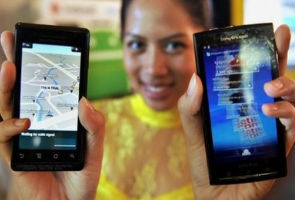
Startup Scoopler was inviting owners of Android-powered smartphones to install an application that promises to alert them every time a celebrity is sighted nearby.
The free JustSpotted software was available online at the Android Market.
"There is no other application that gives you real-time alerts like this with thousands of spottings on our website every day," Scoopler co-founder AJ Asver told AFP in an email.
"If you are in a metropolitan area, you are going to be pleasantly surprised by how close you are to the celebrity world."
JustSpotted.com launched in October with an online map that pinpoints celebrity whereabouts in real time based on public updates from social networking star Facebook and microblogging service Twitter.
JustSpotted members also contribute sightings.
While branded by some as a potential resource for stalkers, JustSpotted billed itself as "celebrity friendly" and said stars can make deals to use the service to promote their images or messages.
"We have not had any complaints from celebrities," Asver told AFP. "We've actually been approached by people about promoting upcoming films."
He said that a version of JustSpotted tailored for iPhones was undergoing an Apple approval process and was expected to be available in the App Store by the end of the month.
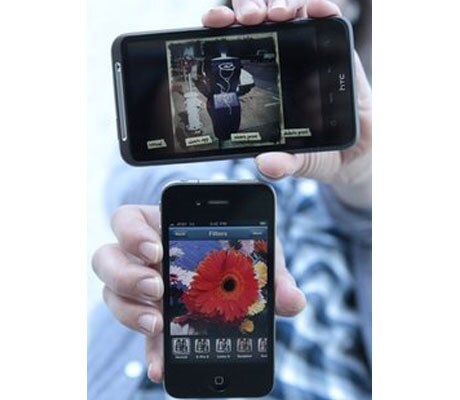
Frankly, I can't remember the last time I picked up my digital camera. Since a smart phone is always on me, either in my bag or back pocket, I use its camera constantly while my perfectly capable point-and-shoot sits on a shelf at home gathering dust.
I know I'm not alone. As cell phones have gotten better and better, their built-in digital cameras have advanced immensely. While they're still not as good as dedicated cameras, smart phones have a couple of big advantages on their side: they run third-party software, and they have Internet access.
That means I can add applications that let me manipulate photos in interesting ways, using the phone's touch screen to go beyond the "black and white" and "vivid color" modes of dedicated cameras, and then share the results.
Here's a look at some noteworthy apps that can make your photos pop:
Instagram (iPhone, free): Instagram is as much of a social app as it is a camera app, and it makes it easy and quick to share artistic shots with your buddies.
After downloading the app and signing up, take a photo or choose one from your photo roll. Then, choose from more than a dozen "filters," or manipulation schemes, that are conveniently previewed at the bottom. The filters generally give photos an old-fashioned look not surprising since the team behind the app, Burbn Inc., cites Polaroid cameras as an inspiration. (The language of old-school photo buffs permeates the apps. Photographers who shot on film used to manipulate their photos with clear glass "filters" they put in front of their camera lenses.)
You can add a description and location to your photo, and then add it to your Instagram photo feed, which shows the photos you and your friends have posted. You can publish your photos to a number of other social sites as well, including Twitter, Facebook, Flickr and Foursquare.
I enjoyed scrolling through the photos my friends had posted, "liking" the ones I thought were best and commenting on some. I quickly got used to checking out the list of most popular photos, which is an excellent, ever-changing source of beautiful shots (and, potentially, new people to follow on Instagram).
Camera Bag (iPhone, $1.99): One of the simplest apps I tried, Camera Bag consists mainly of a collection of filters that, like Instagram, you can apply to photos you take with the app or the iPhone's built-in camera app.
Within Camera Bag, you take a shot and are then given the option to re-take or use that photo. If you choose to use it, you can then scroll sideways through the list of 13 filters "infrared," "fisheye," "silver," "1974" and more to see a preview of how the photo will look. You can save a copy of the photo with one filter, or several copies with a filter apiece, and e-mail them to friends.
It was easy to use the app, which was created by Nevercenter Ltd., to jazz up my photos. I especially liked the "fisheye" lens filter and the way the "Plastic" filter brought out orange and blue tones. If you are looking for an app that will give you a ton of options, however, Camera Bag may be too simple.
Vignette (Android, $4.01): My favorite of the Android camera apps I tried, Vignette includes a ton of camera, film and lens effects that can be used to create all sorts of images.
There are plenty of effects: "Vignette" will focus on the middle of the shot and "Velvia," named after a famous slide film, brightens up colors. The "dreamy" lens effects will soften up the image and "random" will just apply an effect of the app's choosing. You can use filters to highlight certain colors, instruct the app to switch one color out with another and choose from a slew of vintage tints or toy camera effects.
The app, which comes from developers neilandtheresa, also lets you customize settings to your liking by scrolling down a long list of options: For example, if you want to take photos with a grainy-looking film, soft-focus halo, magenta filter, extra "light leaks" (as if streak of light had hit film in a broken camera) and a timestamp like you'd see on a digital camera, you can just check these boxes and start snapping.
While I spent more time futzing with Vignette's setting than with other apps I tried, I also got the most interesting, varied shots with it. Wandering around a local park, it helped me brighten up the blue sky and highlight the yellow of a bell flower with the sun shining through. In another image, the park's green grass and treetops shone chartreuse while the sky, cars and tree trunks showed up in black, white and gray.
Beyond all these effects, Vignette includes a variety of adjustable camera settings, including contrast, saturation, sharpness, exposure and white balance. There's also an option to touch the screen anywhere to take a photo, which I found useful since I was testing the app on a phone that doesn't include a dedicated camera button.
Compared to other camera apps, Vignette is pricey, but its capabilities make it worth the cost. And if you're curious to try it out but don't want to commit just yet, there's also a free demo version available.
Retro Camera (Android, free): As its name implies, Retro Camera lets you take photos that look as if they were shot with old-style cameras. The app, which comes from Urbian Inc., includes the app developer's takes on five different "cameras" that you can shoot with: The Barbl, Little Orange Box, Xolaroid 2000, FudgeCan and Pinhole. Each camera can be used in color or black-and-white mode, and the images I got were definitely retro and cool-looking.
My favorites were The Barbl and Little Orange Box, which are modeled off of a `50s East-German camera and a `70s Russian camera, respectively. Shots I took with The Barbl looked a little washed-out, while those taken with Little Orange Box were high-contrast and sharp-looking, occasionally with scratches on the images.
I also loved some of the app's quirky touches, such as the way the "camera" you're using fills up the phone's screen and gives you its own little viewfinder, and how the photos you've taken are arranged on a virtual clothesline, clasped by virtual clothespins a reference to how photos were hung to dry after processing in a darkroom.
Jelly Lens (Any cell phone, price varies): Who says smart phones should have all the fun? As long as your cell phone has a camera you can use a little gizmo called the Jelly Lens to add special effects to any photo you take (and if you do have a smart phone, you can use this with any app you like).
Much like the glass filters employed by old-time photographers, the Jelly Lens is a little plastic lens filter with a sticky ring on its back that you can attach to the lens of any small camera. Each Jelly Lens comes with one built-in filter with an effect like "kaleidoscope," "stretched" or "wide angle."
I bought one with a "starburst" effect that blurs the edges of the image to create a sometimes-dreamy, sometimes-streaky shot, depending on what I was photographing. Through the Jelly Lens, an ice-cream-stick sculpture on my mantle became a psychedelic work of art. And I liked that the focal point on the filter was slightly off-center, so I could turn it to choose my focus.
I appreciated the Jelly Lens' built-in keychain and cell phone loop definitely useful since it could easily get lost. I wasn't that thrilled with its level of stickiness, though, as it often fell off the back of my phone. You can wash it with soap and water to remove any gunk that gathers and make it sticky once again, but I only had limited success with this.
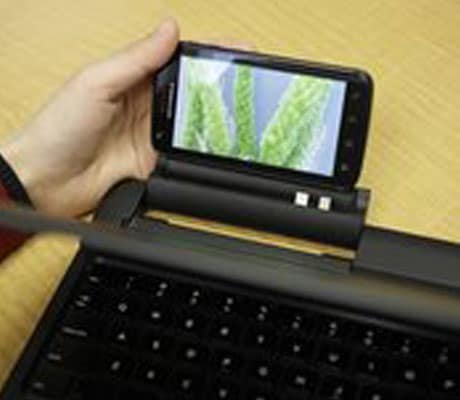
As smart phones get an increasing array of features, they need faster processors. The Motorola Atrix 4G, billed as "the world's most powerful smart phone," arrives with 2 gigahertz of processing power_ the kind you're more likely to find on a laptop than a phone.
That's notable because there's an optional laptop dock, which makes the phone function as, well, a laptop.
The Atrix is available now for pre-order from AT&T Inc. and will begin selling March 6. It costs $200 with a two-year contract. But if you buy it with the dock, it will cost $500 after rebate, and you'll have to get a more expensive data plan.
On its own, the Atrix is a speedy phone, though not necessarily eye-catching. With the skinny, light dock, the Atrix is a Web surfing and e-mailing champ, which could make it a good travel buddy. For heavy-duty computing, though, I'd still stick with my full-featured laptop.
The Atrix's black slab exterior makes it look like other smart phones, but start poking around and the difference is clear: This is a fast handset. With tasks that don't require a wireless network, such as taking photos or playing games, the Atrix opened menus and applications without hesitation. The camera seemed to start up faster than those on other smart phones I've used, and I could scroll through applications and contacts on its 4-inch screen with ease.
Considering its processing power, I was miffed to see the Atrix is currently running version 2.2 of Google Inc.'s Android operating system, Froyo, rather than the newer Gingerbread version, whose faster performance and better on-screen keyboard would match well with the Atrix.
The Atrix works on AT&T's upgraded 3G network, HSPA+, so to try it out I walked to AT&T Park, where the San Francisco Giants play. There, the phone streamed videos as flawlessly as if I were on my home Wi-Fi network. At my office or home I wouldn't even attempt to stream content over AT&T's network as service is unreliable.
Not surprisingly, call quality at AT&T Park was also excellent. My mom, a frequent target of my test calls and sharper critic of sound quality than I am, even said that the Atrix sounded "pretty good for a cell phone." But in my office, where AT&T's reception is spotty, I had to try several times to get a call to go through. When I finally did, a friend sounded muffled on the other end (he said I did, too).
The phone's display is clear and bright, with good viewing angles that would make it useful for sharing video clips with a friend. When streaming YouTube content, such as Nicki Minaj's "Moment 4 Life" music video, I didn't feel as if the colors were as warm as they could have been, though. Like a growing number of phones, the Atrix can play Flash videos something the iPhone can't do.
The 5-megapixel camera on the Atrix's back wasn't impressive. Photos were crisp, but colors didn't really pop. And there are only a handful of settings and color effects, so if you want to get creative you'll need to download a camera app (free ones include Camera 360 Lite and Retro Camera).
You'll also need to snag an app such as Qik if you want to video chat with a friend: The Atrix has a front-facing camera, but it doesn't include video chat software.
I expected long battery life, especially with AT&T claiming that you can watch two full-length movies in a row on a single charge. The phone is rated for up to nine hours of talk time, and in a day that included much multitasking and streaming a full-length animated movie from YouTube over Wi-Fi, the battery held up well.
I also expected a lot from the dock, especially because Motorola Mobility Inc. isn't the first to come up with the idea of combining a phone with a laptop-like dock: One high-profile example came from Palm, now owned by Hewlett-Packard Co., which in 2007 announced and subsequently shelved a laptop-like device called Foleo. It would have acted as a companion to users' Palm Treo smart phones.
Once I plugged the Atrix into the laptop dock, I entered a combination phone-netbook experience, which gave me more functionality than with the handset alone but not as much as I'd have with a dedicated laptop.
The dock has a bright, crisp screen that measures 11.6 inches diagonally, a full-but-slightly-cramped keyboard and a large touchpad. There are two USB ports and a standard headphone jack. Because the dock has its own battery, it can charge the Atrix while they are attached. Oddly, the dock doesn't have a front-facing camera, so you can't use it for video chats.
With the Atrix attached to the dock, a small "mobile view" on the dock's screen shows you what's on your phone's screen you can use this to access phone functions like making or answering calls or sending text messages, which is neat.
The dock's main appeal is that it includes the Firefox Web browser, allowing you to surf the Web uninhibited by the limitations imposed by the phone's smaller display. The dock is great for checking e-mails and visiting websites, and you could use it for some work, too.
Still, it's not a computer. Without the Atrix plugged in, the dock does nothing. It's expensive, and you'll have to add on a $20 per month for AT&T's mobile hotspot feature (on the plus side, this will enable you to connect four more gadgets to the Internet through your Atrix).
If you're hankering for a speedy phone, the Atrix is a good bet. I'd hold out on the dock, though. It could be a useful accessory in the future, but for now its price doesn't match up to its limited functionality.
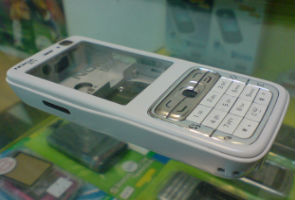 It's quite a challenge at times to make a phone call, it requires many steps. For instance, thinking of a person to call, finding their names on the cell phone or dialing their number and waiting for the call to connect. Too many steps, right?
It's quite a challenge at times to make a phone call, it requires many steps. For instance, thinking of a person to call, finding their names on the cell phone or dialing their number and waiting for the call to connect. Too many steps, right?
At least some US researchers think so. They have now figured out a way that relies on thought power alone to make such calls without lifting a finger.
Users wear a specially designed headband hooked up to a Bluetooth device that wirelessly sends commands to a Nokia N73 mobile phone.
The technology works by responding to cues from the brain and experts believe anyone with training will be able to master the technique, the Daily Mail reports.
Tzyy-Ping Jung at the Swartz Centre for Computational Neuroscience at the University of California, San Diego, said the device relies on electroencephalogram (EEG) electrodes on the scalp to work out what the brain is trying to say.
Jung believes it could be 100 percent accurate with just a bit of training.
The breakthrough is likely to create safer hands-free mobile phones to help the disabled or elderly and help professionals in high pressure work environments.
The initial experiments of the device were between 70 percent and 85 percent accurate when trying to dial a 10-digit phone number.
Thought powered computers have been around for a while, however this is the first time it has been adapted for mobile phones.












